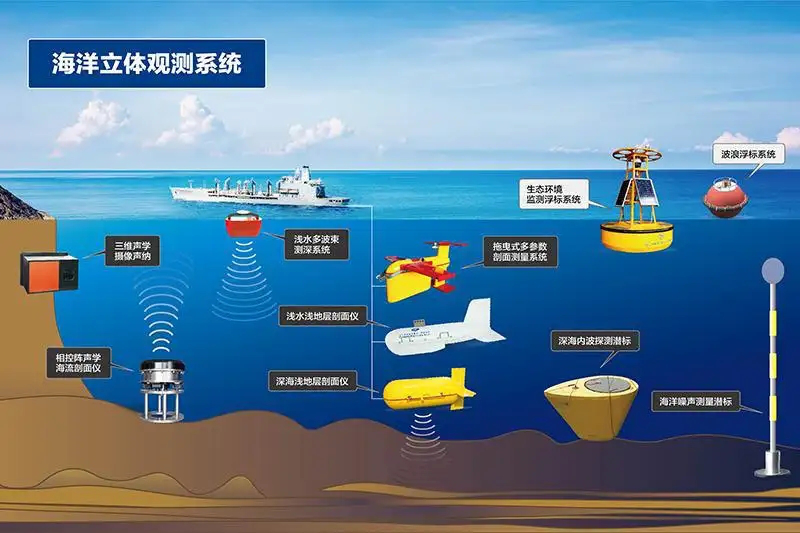The composition of the marine environmental security technical system
Marine environmental security technology mainly realizes the acquisition, inversion, data assimilation, and forecasting of marine environmental information, and analyzes its distribution characteristics and changing laws; according to the needs of marine environmental information, it realizes the collection of marine environmental elements, and forms the results of situation analysis, which is the basis for marine safety. Provide support. For example, the impact of tides on landing, the impact of currents and waves on navigation safety, the impact of underwater temperature, salinity distribution and changes on underwater communication, etc. The marine environment safety assurance technology system includes three independent and inseparable parts: marine environment parameter perception technology, data integration and analysis technology, and application assurance technology.
⑴ Marine environmental parameter perception technology. Marine environmental parameters include: atmospheric temperature, humidity, air pressure, rainfall, clouds, fog, wind field, etc., water environment temperature, salinity, pressure, current, water color, etc., seabed environment topography, landforms, etc. Marine environmental parameter perception technology is the acquisition, transmission and storage technology of marine environmental parameters, mainly including satellite observation technology, scientific research ship observation technology, shore-based and submersible/buoy observation technology, mobile platform observation technology and seabed observation network technology, etc.
Based on the interdisciplinary characteristics of multiple disciplines, marine science puts forward high requirements for the comprehensiveness of observation methods and platforms. It is necessary to develop a new type of ocean observation integration technology characterized by low power consumption, high precision, low drift and multiple sensors; breakthroughs in large-flow, all-weather, Full-sea depth, safe and reliable real-time transmission, underwater real-time communication, sensor collaborative observation, energy supply and other key technologies.
⑵ data integration and analysis technology. The multi-source, multi-data format, multi-scale and dynamic nature of marine environmental data determines that data integration must be carried out, otherwise it cannot be effectively organized, managed and applied. An ideal integration technique should start with a conceptual model of requirements and explore the possibility of integration among different requirements. Through the mapping relationship between the demand conceptual model and the data model, the effective integration from the demand layer to the data layer is finally realized. Fundamentally realize the integration and service problems of multi-source data, and then solve the problems of manual interaction and visualization of integrated data for application assurance.
(3) Application assurance technology. Application guarantee technology refers to closely combining marine environmental information needs, relying on the acquisition of marine environmental parameters, and using computer, communication, network and other technologies as service platforms, and fully applying resources to provide support and guarantee for marine environmental security according to marine environmental elements and situations. Marine environmental protection is mainly a comprehensive application for the marine environment, such as: real-time environmental information network and analysis system, comprehensive environmental assessment system, etc., as well as applications for different scenarios.
Post time: Oct-19-2022

